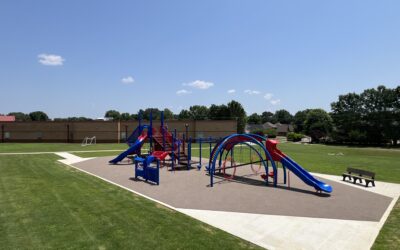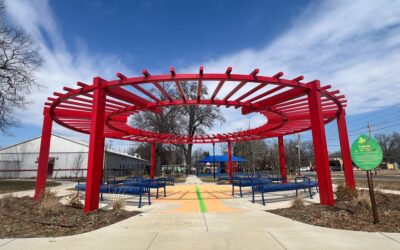Choosing the right commercial playground equipment is crucial for creating safe and engaging play spaces. These spaces are essential for schools, parks, and daycare centers. They provide children with opportunities for physical activity and social interaction.
Selecting the right equipment involves considering various factors. These include the age group of the children and the specific needs of the community. It’s important to ensure that the equipment is durable and meets safety standards.
Commercial playground equipment is designed to withstand heavy use and harsh weather. It should also be inclusive, catering to children of all abilities. This guide will help you navigate the options and make informed decisions.
Understanding Commercial Playground Equipment
Commercial playground equipment is built for durability and safety in high-traffic areas. This equipment must endure constant use and varying weather. High-quality materials are crucial for these setups.
Different types of playground setups suit different environments. Schools, parks, and daycare centers all have unique requirements. Customizable options allow for tailored designs and themes.
Key features of industrial playground equipment include:
- Sturdy materials resistant to wear
- Safety features such as rounded edges
- Compliance with safety standards
Selecting suitable equipment enhances the play experience. It encourages children to engage physically and socially. Understanding these elements can guide you toward optimal choices.
Key Considerations When Choosing Playground Equipment
When selecting commercial playground equipment, consider the age group. Equipment should match children’s developmental needs and abilities. Safety and engagement must be prioritized.
Space availability influences equipment choices. Measure the area accurately to avoid overcrowding. Adequate space ensures safe play zones.
Budgeting is an essential step. Playground equipment prices can vary significantly. Prepare for this by assessing potential costs.
A checklist for choosing playground equipment may include:
- Age-appropriate designs
- Safety and accessibility features
- Space measurements
- Budget limitations
Community involvement in planning can prove beneficial. Collect feedback from parents and children. This ensures the playground meets users’ expectations and needs.
Types of Commercial Playground Equipment
Commercial playground equipment comes in a variety of forms. Each type caters to different preferences and needs. Understanding these variations can help in making informed decisions.
Some playground structures focus on physical activity. These include climbing walls, monkey bars, and rope courses. They challenge children’s strength and coordination.
Interactive and educational play sets are also popular. These incorporate panels, musical elements, and puzzles. They stimulate children’s minds while they play.
Here’s a brief list of common playground equipment types:
- Climbing structures
- Swings and slides
- Interactive panels
- Balance beams

For larger community spaces, consider industrial playground sets. These can handle high traffic. They come with robust designs and multiple play elements.

Age-Appropriate and Inclusive Design
Designing with age suitability in mind is crucial. Young children require simpler equipment. Bright colors and low platforms engage them safely.
Older kids need more challenging designs. Equipment with varying heights and complexity suits their development. It keeps them stimulated and motivated.
Inclusivity in playgrounds ensures all children can play together. Consider equipment that accommodates diverse needs. Features like wide ramps and adaptive swings allow every child to participate.

In an inclusive playground, every child should feel welcome. The design should foster interaction and friendship. Accessible and age-appropriate structures make this possible.
Safety Standards and Compliance
Ensuring safety is paramount in playground design. Equipment must meet stringent safety standards. It’s crucial for preventing accidents and injuries.
A key part of compliance is regular inspections. These ensure equipment remains in top condition. They help identify any potential hazards early.
Key safety features include:
- Rounded edges on equipment
- Non-slip surfaces for better grip
- Secure, tamper-proof fastenings

Always choose equipment from reputable manufacturers. They prioritize safety and follow industry standards. Compliance ensures a safe play environment for children.
Budgeting and Playground Equipment Prices
Planning a playground involves understanding equipment costs. Prices vary based on several factors, such as materials and size. It’s essential to set a realistic budget.
Consider these cost-influencing factors:
- Material durability
- Complexity of structures
- Customization requirements

Allocate funds for installation and maintenance too. These are important for the equipment’s lifespan. Proper budgeting ensures a well-rounded playground project, making the most of available resources.
Installation, Maintenance, and Longevity
Proper installation of commercial playground equipment is vital for safety and functionality. It’s best to hire certified professionals to ensure everything is secured and compliant.
Regular maintenance is crucial for extending equipment life and ensuring safety. Consider these maintenance tips:
- Conduct routine inspections
- Tighten loose fittings
- Repair or replace damaged parts

Longevity depends not only on materials but also on upkeep. Investing in regular maintenance can reduce long-term costs and ensure that the playground remains safe and inviting for years to come.
Enhancing Playgrounds with Park Items and Accessories
Enhancing playgrounds with additional park items can significantly improve the user experience. These elements not only elevate the playground’s aesthetic but also increase its functionality and usability for families.
Consider integrating accessories such as:
- Benches
- Trash receptacles
- Signage
- Bicycle racks

These additions provide convenience and comfort for both kids and parents. Thoughtfully chosen accessories can transform a simple play area into a well-rounded community space.
Planning for the Future: Flexibility and Community Input
Future-proofing a playground involves considering flexibility and community needs. Engage residents to understand desires and preferences.
Key aspects to consider:
- Modular equipment for easy upgrades
- Open spaces for varied activities
- Feedback mechanisms for continuous improvement
These practices ensure playgrounds remain relevant, adaptable, and beloved by the community. Proactive planning creates enduring, dynamic play spaces.
Conclusion: Creating Lasting Play Spaces
Creating a vibrant playground goes beyond equipment selection. It’s about crafting spaces that inspire joy and promote well-being. Thoughtful planning considering age-appropriateness, safety, and inclusivity transforms playgrounds into cherished community assets.
Investing time in understanding the community’s needs and future growth ensures play spaces remain relevant and engaging. By considering these elements, you ensure a playground not only meets today’s demands but continues to foster fun and development for years to come. Balancing these factors results in cherished and enduring play spaces.






